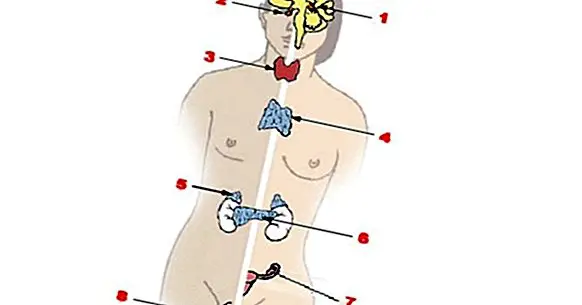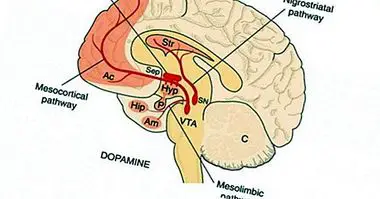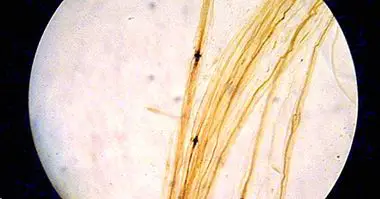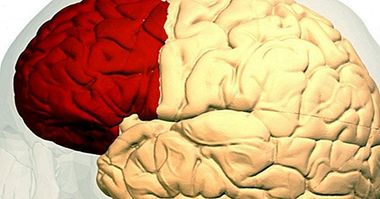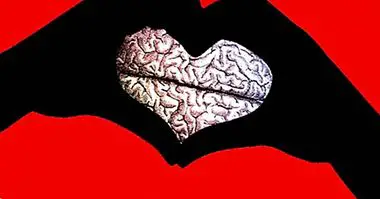Endocrine system: anatomy, parts and functions
Some people say that human behavior is another aspect of our biological design, of what makes us born and develop as we do. In a certain sense, this is true: all our mental activity is, in essence, the product of a set of nerve cells that capture information from the senses, process it, and send orders to the muscles.
However, the nervous system is not the only component that allows us to relate to what surrounds us (and others) as we do. The endocrine system also intervenes in this , through its mechanisms of emission and uptake of hormones. In the following lines we will see what the endocrine system is, what its parts are, and what function it has in the organism.
- Perhaps you are interested: "Parts of the Nervous System: functions and anatomical structures"
What is the endocrine system?
The nervous system is a network of organs and cells that have evolved so that rapid changes occur in the state of a living being, depending on the situation, maximizing the options of appearing an option or reflection that is useful in that context.
However, sometimes there is a need for these changes to be more sustained and affect not only the parts of the body that are involved in a specific action (for example, the arm), but in many target organs, more or less Same time. That is why the nervous system is complemented by what is known as the endocrine system .
The endocrine system is, in short, a set of organs and cellular tissues that They secrete types of substances called hormones, which travel through the bloodstream and they serve to regulate different biological processes.
Difference between the functioning of hormones and that of neurons
Unlike what happens with neuronal activity, the effects that the endocrine system exerts on the body are usually not immediate and take longer to fade, since since the "order" is given to release hormones until they reach their destination several seconds pass.
In addition, another of the differences between the endocrine system and the nervous system is that if in the first the electrochemically transmitted order can reach a specific place in the body, the hormones are never predestined to reach a certain place at a certain time , but by being released into the blood, they flood many parts of the body almost at once , some of these particles reaching their target organ by pure question of probability.
On the other hand, a single release of hormones has sustained effects on several parts of the body at the same time. This is not coincidence, because if something characterizes the endocrine system is that by regulating levels of hormones usually achieve that there is a balance (homeostasis) between different parts of the body, all of them adapting to the same situation, but each one his way
For example, in a dangerous situation, adrenaline is secreted in greater amounts by the endocrine system, doing so much that the heart can beat faster (to react quickly) and that the capillaries close to the skin are constricted, possibly so that in case of wounds, little blood is lost.
The fact that the work of hormones and neurons goes so hand in hand has made you can even talk about a neuroendocrine system : the nervous system takes care of very short-term work (thousandths of a second), and the endocrine gets effects that take a little longer to arrive but that last longer and are coherent with the work of the nerve cells.
His parts
Ente the endocrine organs and the parts of the body in general that are involved in the endocrine system , the following components stand out.
1. Pineal gland
Located in the lower part of the brain, the pineal gland or epiphysis acts as a bridge between the nervous system and the endocrine system. Among the hormones that segregate highlights melatonin , involved in the regulation of sleep-wake rhythm.
- Related article: "Melatonin: the hormone that controls sleep and seasonal rhythms"
2. Pituitary gland
This part of the body, which is also called the pituitary gland, is also located in the lower part of the brain. It is very important, since it secretes many types of hormones and indirectly affects the segregation of others, since it stimulates other glands located in different parts of the body, including the thyroid.
It fulfills many functions, and among them the regulation of several biological processes stands out linked to reproduction and sexuality. For example, it allows the ability to lactate to appear, as well as the maturation of the ovules and the creation of sperm.Its role in growth is also very important, since it secretes growth hormone.
- Maybe you're interested: "Pituitary gland (hypophysis): the nexus between neurons and hormones"
3. Adrenal gland
These glands are located on each of the two kidneys that the human body has, and their role in the endocrine system is linked to the regulation of stress states , fundamentally those that have to do with the fighting or flight behaviors. For example, they can increase blood volume, stimulate the available energy for immediate expenditure and inhibit biological processes with long-term goals, such as the inflammatory response.
4. Hypothalamus
The hypothalamus is one of the most important parts of the brain, and initiates several mechanisms of release of many different types of hormones from several glands, from the capture of nerve signals. For it, secretes hormones from the corticosteroid and catecholamine groups .
- Related article: "Hypothalamus: definition, characteristics and functions"
5. Thyroid
The thyroid is a large gland located in the neck. Segregates calcitonin, triiodothyronine and thyroxine , hormones that intervene in the tel tel metabolism and oxygen consumption, as well as in the generation and regeneration of bones.

